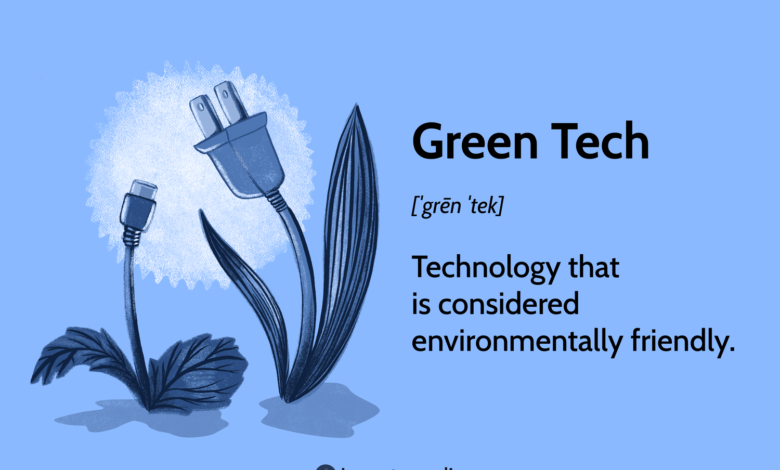What is an Example of New Technology Having a Negative Impact on Sustainability: Eco Woes

Cryptocurrency mining exemplifies new technology harming sustainability due to excessive energy consumption. Its reliance on powerful computing equipment generates a significant carbon footprint.
As society increasingly values eco-friendly practices, the emergence of ground-breaking technologies is met with both anticipation and scrutiny. One such innovation, the cryptocurrency industry, has spawned a global mining phenomenon, revealing the environmental costs of digital currencies. Cryptocurrency mining, particularly Bitcoin, demands vast amounts of electricity to run the network’s required complex calculations.
The process often relies on non-renewable energy sources, contributing to greenhouse gas emissions and straining finite resources. While promising decentralized financial systems, this technology simultaneously poses challenges to sustainable development goals. Shifts in public sentiment now push for greener solutions, hoping to find a balance where technological advancement aligns with the pressing need for sustainability.

Credit: edinburghsensors.com
Introduction To Eco Woes
The rapid march of modern innovation often overshadows a crucial question – at what cost comes progress? A look at the environment reveals a startling answer. As new technologies shape our lives, they also cast long shadows on our planet’s sustainability. The impacts are significant, triggering a need for responsible reflection on how we embrace and mitigate technological advances for a greener tomorrow.
Setting The Scene: Advancements Vs. Environment
Breakthroughs in technology promise efficiency and modern conveniences. But these shiny prospects can carry hidden environmental costs. From the mining of rare earth elements to the energy demands of the digital economy, every leap forward can push the environment a step back. We’re now facing a critical balance: nurturing technological growth while protecting our planet’s future.
Technological Innovation: A Dual-edged Sword
It’s an undeniable truth that innovation carries a duality. While bringing transformative benefits, it can inadvertently harm our ecosystems. Consider the case of fast-evolving consumer electronics. Smartphones and laptops become obsolete quickly, leading to mounting e-waste. Devices meant to connect us globally may disconnect us from environmental responsibility. This duality calls for a sustainable mindset in technology’s design, use, and disposal.
E-Waste: A Growing Concern
| Technology Product | Lifetime | Environmental Impact |
|---|---|---|
| Smartphones | 2-3 Years | Pollution, Resource Depletion |
| Laptops | 3-5 Years | Toxic Waste, Energy Consumption |
Recognizing these eco woes, we must pivot towards solutions. Recycling programs and pushing for longer-lasting products are steps in the right direction. Engaging in this conversation is critical. It ensures that technology serves us without compromising the ability of future generations to enjoy a healthy planet.
The Plastic Predicament
The Plastic Predicament spotlights an urgent sustainability challenge. Our love for plastic has evolved into a global threat. Once hailed as a marvel, it now fills landfills and oceans. It harms creatures large and small.
From Convenience To Crisis
Plastic began as a convenience. It’s lightweight, durable, and versatile. It shapes everyday life, from packaging to gadgets. But this convenience comes with a cost. Millions of tons of plastic waste now pollute the planet. It doesn’t decay quickly, sitting in nature for centuries. Animals mistake it for food, and it breaks into microplastics. These tiny pieces spread through water and soil.
Biodegradable Alternatives: Progress And Setbacks
Enter biodegradable alternatives. These materials promise to reduce waste. They’re made to break down faster. But it’s not a simple fix. Some need specific conditions to decompose. Others don’t break down completely, leaving microplastics behind.
- Bioplastics may seem eco-friendly, but they require industrial composters.
- Traditional crops, used to make alternative plastics, compete with food production.
- Many biodegradable items never reach the right facilities to decompose properly.
This technology has strides to make before it can truly lessen the plastic crisis. Research continues, aiming for real solutions. It’s a race to create materials that balance sustainability with convenience. We must support and refine these technologies, for the planet’s sake.
Energy-intensive Tech Boom
Technology advances rapidly. New gadgets and services appear daily. Yet, they often need more energy. This creates a dilemma. Innovation excels, but sustainability suffers. Here, we explore two key areas where tech impacts our planet negatively.
The Rise Of Data Centers
Data centers are the backbone of the internet. They store and process our digital lives. But they consume massive amounts of electricity. Cooling these centers takes even more. This trend is growing, as data demand soars.
- Use of air conditioning to cool servers
- Steady 24/7 operation
- Increased carbon footprint
| Year | Data Centers Electricity Usage |
|---|---|
| 2018 | 198 TWh |
| 2019 | 205 TWh |
| 2020 | 213 TWh |
Cryptocurrency Mining: Power And Pollution
Cryptocurrency mining is power-hungry. Miners use vast amounts of electricity. The result? Higher pollution levels. Some cryptos like Bitcoin require more energy per transaction than a household uses in a month.
- Energy used to create and validate transactions
- Heat generated from mining equipment
- Dependency on non-renewable energy sources
Mining rigs run non-stop, competing to solve complex equations. This heats our planet more each day, contradicting sustainability goals.

Credit: www.ucsusa.org
Fast Fashion Fiasco
The term ‘Fast Fashion Fiasco’ captures how cutting-edge trends harm our planet. Brands create cheap, stylish clothes. They release new designs constantly. This may seem great for shoppers. But it leads to serious environmental issues. Billions of pounds of textiles fill landfills each year. Producing clothes fast also uses lots of water and chemicals. This post explores the hidden costs of staying trendy on a budget.
Cheap Clothes, Costly Environment
Cheap clothes come with a high price for nature. Fast fashion brands sell clothes at low prices. This makes people buy more than they need. Brands use harmful materials to keep costs down. These materials damage our Earth. For example, polyester is cheap but hard to break down. Clothing waste becomes a towering issue. Textile dyes pollute rivers. The damage spreads far and wide.
Wasted Resources And The Throwaway Culture
The fast fashion cycle encourages massive waste. It’s all about making and buying more. Few think of the resources used. Clothes production needs water. It takes 2,700 liters to make one cotton shirt. That’s the same as drinking water for two and a half years! Yet, many clothes end up barely worn, then tossed out. It creates a throwaway culture. This waste of resources is ruining our sustainable future.
- Water: A single pair of jeans can use up to 10,000 liters of water to produce.
- Chemicals: Toxic substances in dyes harm wildlife and ecosystems.
- Greenhouse Gases: The fashion industry emits more carbon than international flights and maritime shipping combined.
E-waste: The Dark Side Of Gadgets
Our love for the latest gadgets comes with a cost far beyond the price tag. In the shadows of shiny new technology lies a growing problem – e-waste.
Disposable Devices: A Growing Mountain Of Waste
In today’s fast-paced tech world, devices become outdated quickly. Consumers chase the newest phones, laptops, and tablets, leaving old models to collect dust. These unwanted gadgets contribute to a mountain of waste that keeps on growing.
- Increased production: More gadgets mean more waste.
- Shorter lifespans: Devices die out or become obsolete.
- Throw-away culture: Replacing beats repairing.
The Troubles With Recycling Electronics
Recycling electronics sounds like the perfect solution, but it’s not that simple. Electronics contain a mix of valuable materials and hazardous substances. This combination makes recycling a complex task.
| Material | Recycling Difficulty |
|---|---|
| Plastics | Hard to separate |
| Heavy Metals | Toxic to handle |
| Precious Metals | Costly to extract |
Many recycling centers lack the proper equipment to safely dismantle and recycle electronics. Also, not all components can be recovered; hence, some end up as waste despite recycling efforts.

Credit: edinburghsensors.com
Conclusion: Balancing Tech And Eco Health
As technology advances, it often does so at the expense of our planet’s health. Devices become outdated quickly, creating e-waste, and energy consumption soars. But it is possible to embrace technology while also prioritizing sustainability.
Rethinking Consumer Habits
To reduce negative impacts, individuals must change how they use tech. This means buying less and choosing eco-friendly products. Instead of chasing the latest models, users can extend the life of their existing devices through proper care and repair, significantly reducing e-waste.
- Repair and recycle old electronics.
- Support companies with strong sustainability policies.
- Use devices until their end of life responsibly.
The Role Of Policy In Shaping Sustainable Innovation
Government action can steer tech development towards sustainability. Regulations can enforce greener production methods and better recycling practices. Tax incentives for sustainable operations encourage companies to innovate responsibly.
| Policy Type | Expected Outcome |
|---|---|
| Production Guidelines | Reduces environmental harm |
| Recycling Laws | Decreases e-waste |
| Tax Incentives | Promotes green innovation |
Conclusion
Exploring the intersection of new tech and sustainability is crucial. Tech advances can hinder eco-efforts, as seen with e-waste. Awareness and responsible innovation are key. It’s vital we strike a balance to safeguard our future. Mindful adoption of technology will champion sustainable progress.



